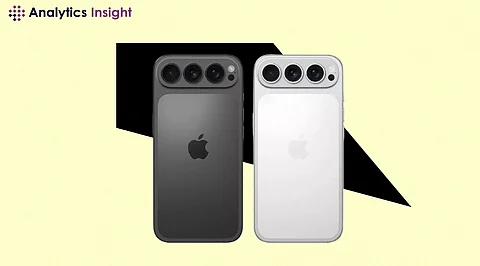

Key Takeaways
iPhone 17 Series is expected to launch in September 2025 with four variants, including a new ultra-thin "Air" model.
Major upgrades include a 120 Hz display, A19 Pro chip, and 24MP front camera across all variants, with triple 48MP rear cameras on Pro models.
Design changes may feature a slimmer build, Pixel-style camera bar, and aluminum frames, along with fresh color options like purple and green.
Apple fans are buzzing about the upcoming iPhone 17 Series, expected to launch in September 2025. All four variants are expected to feature 120 Hz displays, a powerful A19 chip, and a thinner form factor. New color options may include fresh shades of purple and green. There will be a standard, Pro, Pro Max, and a new "Air" variant.
Apple usually releases new iPhones in September. According to this trend, the iPhone 17 release date is expected to be September 2025. Rumors suggest the unveiling could happen between September 8 and 10, likely during Apple’s annual second-week event. Pre-orders will be available on September 12, and the smartphone will be available in the market on September 19.
Apple hasn’t revealed official pricing for the iPhone 17 Series yet. However, the new models are expected to closely resemble the iPhone 16's pricing strategy. For example, the iPhone 16 Pro Max had a retail price of Rs 1,44,900 in India. The same may be true for the iPhone 17 Pro Max. Moreover, the iPhone 17 Air may be launched in the US at $899 and £899 in the UK.
Apple has always been reputed for its camera features, and the iPhone 17 Series also looks promising.
Front Camera: All variants are expected to come with a 24-megapixel front camera with a six-element lens for better front-position selfies and video conferencing.
Rear Cameras:
iPhone 17 and iPhone 17 Air- Likely to feature a 48-megapixel primary camera.
iPhone 17 Pro and Pro Max- Expected to come with a triple camera setup at the back, all with 48 MP sensors for the wide, ultra-wide, and telephoto lenses. This will be the first time Apple offers three high-resolution sensors in a single device.
The iPhone 17 Series is expected to introduce several hardware enhancements.
Processor—The devices may be powered by the A19 Pro chipset, which uses TSMC's enhanced 3nm process for maximum performance and efficiency.
Memory—Pro models might have between 12GB and 16 GB of RAM to support multitasking and artificial intelligence.
Cooling System—A vapor-chamber cooling mechanism could be implemented to tackle heat issues during heavy usage, probably in the Pro Max version.
Display—The Apple iPhone 17 Air will likely have a 6.6-inch OLED LTPO display that supports high refresh rates and power efficiency.
Battery—The iPhone 17 Pro Max may have a 4,685 mAh battery to offer users more usage time.
Significant design alterations are anticipated:
Camera Layout: Pro models might adopt a rectangular camera bump spanning the back, resembling a Pixel-like camera bar.
Frame Material: An aluminum frame might be used instead of the current titanium.
iPhone 17 Air—This model will be extremely thin, measuring up to 5.5 mm and 6mm, making it possibly the slimmest iPhone ever manufactured.
While official details are still under wraps, early leaks suggest Apple is emphasizing design innovation and next-gen technology with the iPhone 17 Series. As September 2025 approaches, anticipation builds for one of Apple's most exciting releases.
